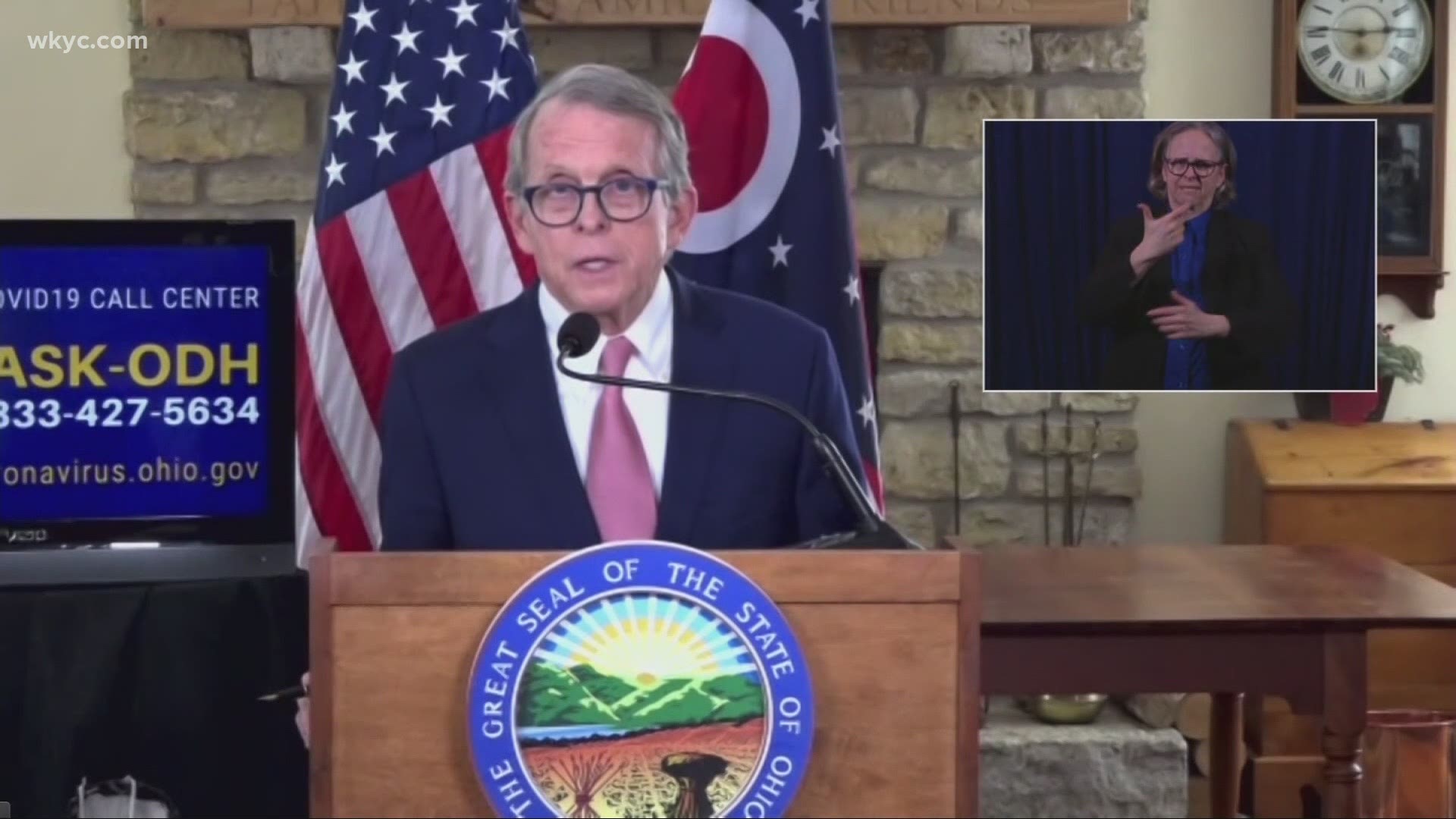COLUMBUS, Ohio — The entire state of Ohio has been under a curfew since November in an effort to reduce the spread of COVID-19 -- but those overnight restrictions have come to an end.
During his COVID-19 briefing on Thursday, Gov. Mike DeWine announced that the state's 11 p.m. to 5 a.m. curfew has been lifted now that the state’s COVID-19 hospitalizations have been less than 2,500 for seven consecutive days.
In announcing the criteria for Ohio's curfew to be reduced and ultimately dropped, DeWine stated that he could reinstate the curfew should the state's active hospitalizations rise to a certain level. On Thursday, DeWine stressed the need for Ohioans to continue to take safety precautions including the wearing of masks and physical distancing as the state continues to distribute the coronavirus vaccine.
Here is the daily hospitalization count for the last week, according to the state's latest data:
- Feb. 11: 1,862
- Feb. 10: 1,922
- Feb. 9: 1,980
- Feb. 8: 2,011
- Feb. 7: 1,969
- Feb. 6: 2,026
- Feb. 5: 2,172
- Feb. 4: 2,251
The last day hospitalizations topped 2,500 was on Feb. 1 with 2,519.
Most recently, the curfew was adjusted to start one hour later – in effect from 11 p.m. to 5 a.m. – after hospitalizations dipped below 3,500 for seven consecutive days. When the curfew was first activated on Nov. 19, it was originally expected to expire after 21 days, but it was extended multiple times as new infections and hospitalizations surged.
At the time he announced the curfew late last year, Gov. DeWine said it was aimed at keeping Ohioans home during the restricted hours in an effort to limit contacts. It also meant restaurants and bars had to close their in-person services early.
The curfew, however, did not impact the following:
- People going to or from work.
- Those who have an emergency.
- Those who need medical care.
- Grocery shopping.
- Going to the pharmacy.
- Picking up carryout or a drive-thru meal. Delivery is also permitted.
Also from Thursday, DeWine announced that starting next week, Ohioans with certain conditions that they were born with or those who were diagnosed in childhood and carried into adulthood will be able to begin receiving vaccines. According to DeWine and Ohio Department of Health Chief Medical Officer Dr. Bruce Vanderhoff, individuals with some of the following conditions face a significantly higher risk for adverse COVID-19 outcomes:
- Sickle cell anemia
- Down syndrome
- Cystic fibrosis
- Muscular dystrophy
- Cerebral palsy
- Spina bifida
- People born with severe heart defects requiring regular specialized medical care
- Those with severe type 1 diabetes who have been hospitalized in the past year
The entire list of conditions can be seen in the tweet below:
You can watch Thursday's entire briefing in the player below:
MORE HEADLINES:

